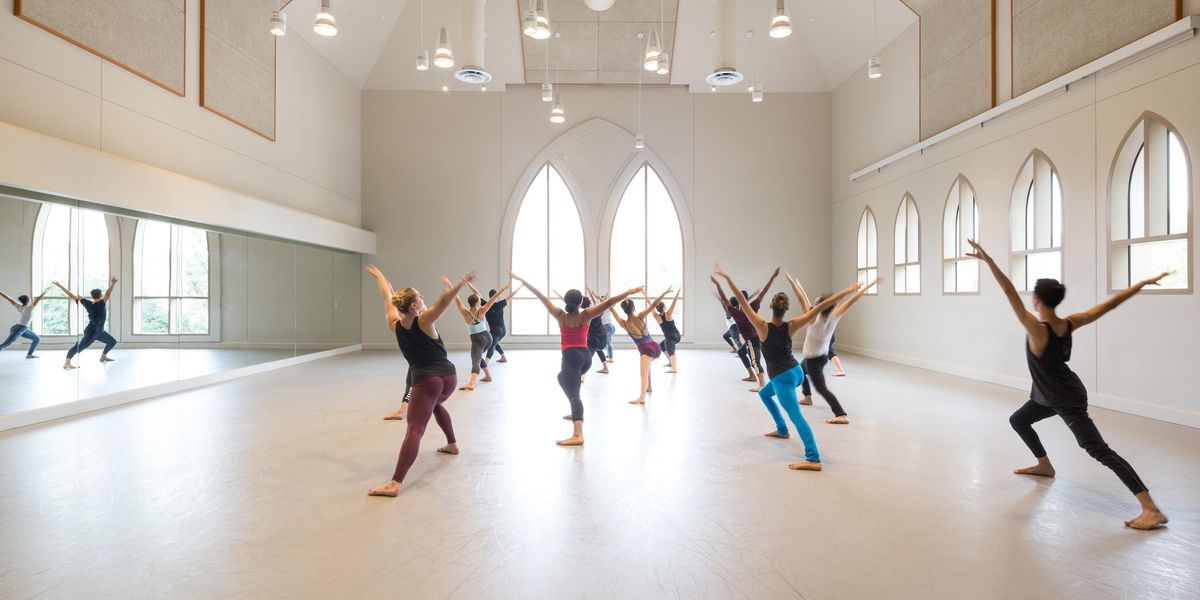Teacher's Wisdom
As a child, Sam Weber first delved into tap dancing as a means of escaping reality. Now in his 50s, this protégé of Stanley Kahn has tapped his way to international acclaim. Weber’s dancing exudes an effortless grace that comes from his years as a dancer with the Joffrey Ballet. He’s danced alongside Savion Glover, Gregory Hines, and the Nicholas Brothers, just to name a few. The first tap dancer ever to receive a Bessie Award, Weber currently juggles his time between touring the world as a principal dancer and choreographer with the Jazz Tap Ensemble, and teaching master classes and workshops. His first annual Weber Institute will take place in Chicago July 24–28 (
www.samweber.org). Lane Alexander of Chicago Human Rhythm Project interviewed Weber about his simple, yet demanding, approach to training tappers.
Can you describe your approach to tap dancing?
Find the most efficient, least effortful way to execute each movement and be able to do the greatest number of sounds with the fewest movements necessary. For example, a shuffle isn’t two movements, as many people are taught; it’s one movement that produces two sounds. If you have to make a new movement for each sound, that adds up to a lot of movements in fast tap dancing! It’s very hard to dance that way, and it makes it difficult to keep steady time or to be rhythmically accurate.
What are the most important things for a tap dancer to know?
Transfer of weight and the relaxed ankle. Good body movement: a sense of relaxation and ease, [a sense] that the movement is organic to the step. Understanding of music and rhythm. A tap dancer should know as much about rhythmic theory as any other percussionist.
Do you organize your classes in a standard way?
I start with basic exercises that will be adapted into more complicated steps and combinations. The early exercises may be technically challenging and rhythmically simple, or the opposite: technically simple and rhythmically challenging. In an advanced class, the material at the end of the class will probably be both technically and rhythmically challenging.
How do you differentiate between beginner, intermediate, and advanced levels?
In an ideal world, beginners would start out with good technical training so that they won’t have bad habits to unlearn later on. For example, if dancers don’t develop the ability to instantly transfer their weight when they step at the beginning of their training, they encounter problems when they move to more advanced levels. This makes for “muddy,” inarticulate sounds. And if beginning dancers don’t develop relaxed ankles and use of the large muscles of the legs, they’ll always struggle with shuffles and flaps at faster tempos. I often see people in advanced classes who are really still at a beginning level technically, despite their having an advanced understanding of rhythm. The technical problems can even interfere with the development of the ear, because students get used to hearing their own faulty execution.
Advanced tap dancers are often seen leaving your class in a state of pleasant confusion. Why?
I like to think that this happens when I’ve gotten them to reexamine the basic movements they’ve taken for granted for many years. Often advanced dancers spend their time learning “new” steps, which usually are the old steps in new combinations, but they never experiment with doing the simplest, most basic movements in new ways. When you can make a change at the most basic level, it can change your dancing radically.
How does ballet training help the development of strong tap technique?
Ballet teaches body alignment, develops good weight distribution (keeping the weight distributed evenly on the foot, more toward the pads of the toes) for balance, jumps, and turns. Understanding how jumps work takes a lot of the mystery out of pullbacks and wings. And it doesn’t hurt to have a tap teacher who will incorporate full body movement, turns, and a general spatial awareness into a tap class.
What advice do you give to young tap dancers regarding their dance education and career expectations?
There is more work for rhythm dancers, “hoofers,” than there was 30 years ago. You should learn about every facet of the business so that you can take advantage of opportunities that may arise while you’re waiting for the dream job. Often, the serious rhythm tapper has a limited background in other dance forms. And dancers who are well versed in ballet, jazz, and other “full body” movement often have only the most basic knowledge of tap. Or they know a lot of steps but not much about how to connect them musically.
How do you know if you have the right teacher?
Watch the advanced class. These are the students who have studied there for 8 to 10 years. They should have clear, musical sounds and should move well. When you begin to study with a new teacher, expect progress to be fairly rapid, allowing, of course, for differences in aptitude and ability. Many students resign themselves to the idea that even a small bit of progress takes a long time. This really isn’t so, if the training is right.
What advice do you give to the injured dancer?
Tap dancers are prone to many of the same injuries as people who run or play running sports, because tap is based on walking and running. So tap dancers get plantar fasciitis (which I’ve had), calf muscle strains (which I’ve had), knee problems such as meniscal tears (which I’ve had). Correct technical training can minimize injury. It really isn’t necessary to “hit” the floor in tap steps, only to let the weight of the body drop. But it’s popular today for dancers to dance as if they’re trying to drive their foot through the floor.
What is the most important thing you learned from your teacher?
Stan Kahn was always learning and you could see that he was always looking for new ways to teach. He never stopped practicing.





